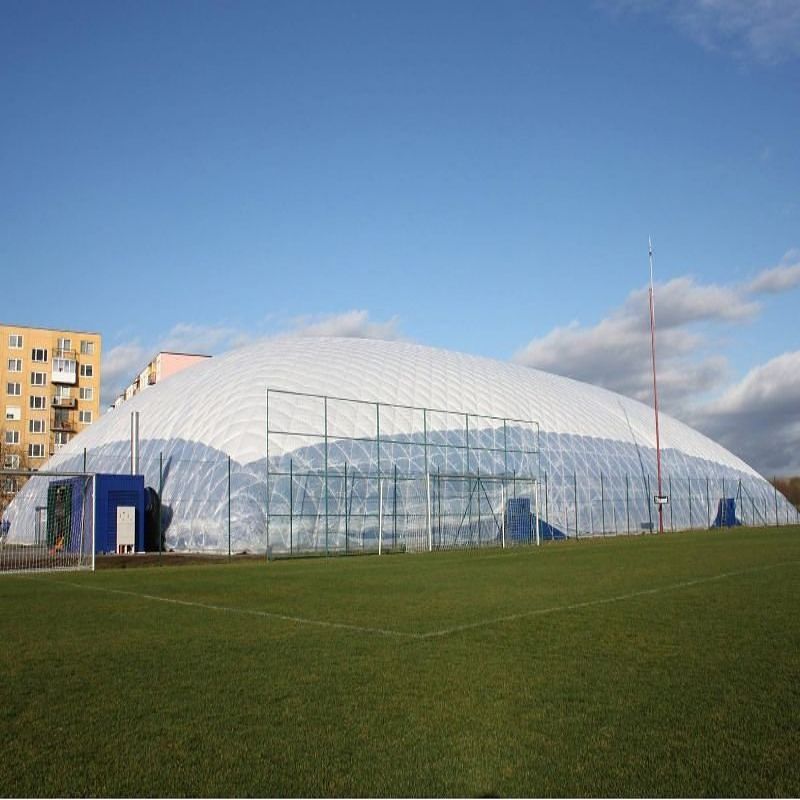Air Dome vs. Fixed-roof Stadiums: Which Offers Better Cost-effectiveness?
Introduction:
When it comes to constructing stadiums, two popular choices that offer different advantages are air domes and fixed-roof stadiums. While each option has its own unique features, the question of which one offers better cost-effectiveness arises. In this article, we will delve into the various aspects of air domes and fixed-roof stadiums to determine which option provides superior cost-effectiveness.
1. Construction Costs between Air Dome vs. Fixed-roof Stadiums
Air domes are known for their cost-effective construction. These structures are typically made of lightweight materials and require minimal labor compared to fixed-roof stadiums. The simple design and quick installation process of air domes significantly reduce construction costs. On the other hand, fixed-roof stadiums involve complex engineering, steel structures, and require a longer construction period, resulting in higher expenses.
2. Maintenance Expenses
When it comes to ongoing maintenance costs, air domes have a clear advantage. These structures require minimal maintenance due to their inflatable nature. Inflatable materials used in air domes are designed to withstand harsh weather conditions and are replaceable if damaged. Conversely, fixed-roof stadiums necessitate regular inspections, repairs, and maintenance to ensure the structural integrity of the roof. The additional maintenance costs associated with fixed-roof stadiums can be a significant financial burden.
3. Energy Efficiency between Air Dome vs. Fixed-roof Stadiums
Air domes are known for their excellent energy efficiency. The inflatable nature of these structures allows for proper insulation, minimizing the need for heating or cooling systems. The air inside the dome creates a natural barrier, preventing heat transfer and maintaining a comfortable environment. Fixed-roof stadiums, on the other hand, often require sophisticated climate control systems to regulate temperature, resulting in higher energy consumption and increased expenses.
4. Flexibility and Portability
One of the remarkable advantages of air domes is their flexibility and portability. These structures can be easily inflated and deflated, allowing for relocation if needed. This flexibility makes air domes a cost-effective choice for multi-purpose venues or temporary events. In contrast, fixed-roof stadiums are permanent structures that lack the ability to adapt or relocate, limiting their versatility and potentially increasing long-term costs.
5. Revenue Generation between Air Dome vs. Fixed-roof Stadiums
Fixed-roof stadiums often have an advantage in terms of revenue generation. These facilities can host a wide range of events, including concerts, conventions, and sports tournaments. The ability to accommodate larger audiences and provide a more permanent space for various activities allows fixed-roof stadiums to generate consistent revenue throughout the year. While air domes can also be used for events, their temporary nature and limited capacity may restrict their potential revenue-generating capabilities.
6. Longevity and Durability between Air Dome vs. Fixed-roof Stadiums
Fixed-roof stadiums are typically designed to withstand decades of use. The robust construction, high-quality materials, and permanent nature of these stadiums contribute to their longevity and durability. While air domes can also be durable, they may be more susceptible to wear and tear due to their inflatable design. Regular usage and exposure to external elements can potentially decrease their lifespan, requiring more frequent replacements and repairs, thus impacting cost-effectiveness.
7. Aesthetics and Fan Experience
Fixed-roof stadiums often offer a superior aesthetic appeal and enhanced fan experience. These stadiums are designed with architectural finesse, incorporating various amenities, luxury boxes, and comfortable seating arrangements. The permanent nature of fixed-roof stadiums allows for advanced sound systems, lighting, and overall stadium ambiance, which can attract more spectators and generate higher ticket revenues. While air domes can be customized to some extent, they may not provide the same level of aesthetic appeal and fan experience as fixed-roof stadiums.
8. Insurance and Risk Management between Air Dome vs. Fixed-roof Stadiums
Insurance and risk management are crucial factors to consider when evaluating cost-effectiveness. Fixed-roof stadiums generally require higher insurance coverage due to their permanent structures and higher replacement values. Air domes, being temporary structures, may have lower insurance costs. However, the risk of damage or collapse in extreme weather conditions may require additional insurance coverage or risk management measures, potentially impacting the overall cost-effectiveness.
9. Environmental Considerations
Air domes are often considered more environmentally friendly compared to fixed-roof stadiums. The lightweight materials used in air domes require fewer resources during manufacturing and have a smaller ecological footprint. Additionally, the energy-efficient nature of air domes results in reduced energy consumption and carbon emissions. Fixed-roof stadiums, on the other hand, may have a larger environmental impact due to their extensive construction and ongoing energy requirements.
10. Resale Value and Future Adaptability
Fixed-roof stadiums generally have higher resale value and future adaptability. These structures can become iconic landmarks and attract potential buyers interested in repurposing the stadium for various purposes. Air domes, being temporary and less versatile, may have limited resale value and fewer opportunities for future adaptability. The potential for future revenue generation or recouping the initial investment is higher with fixed-roof stadiums, making them a more cost-effective choice in the long run.

